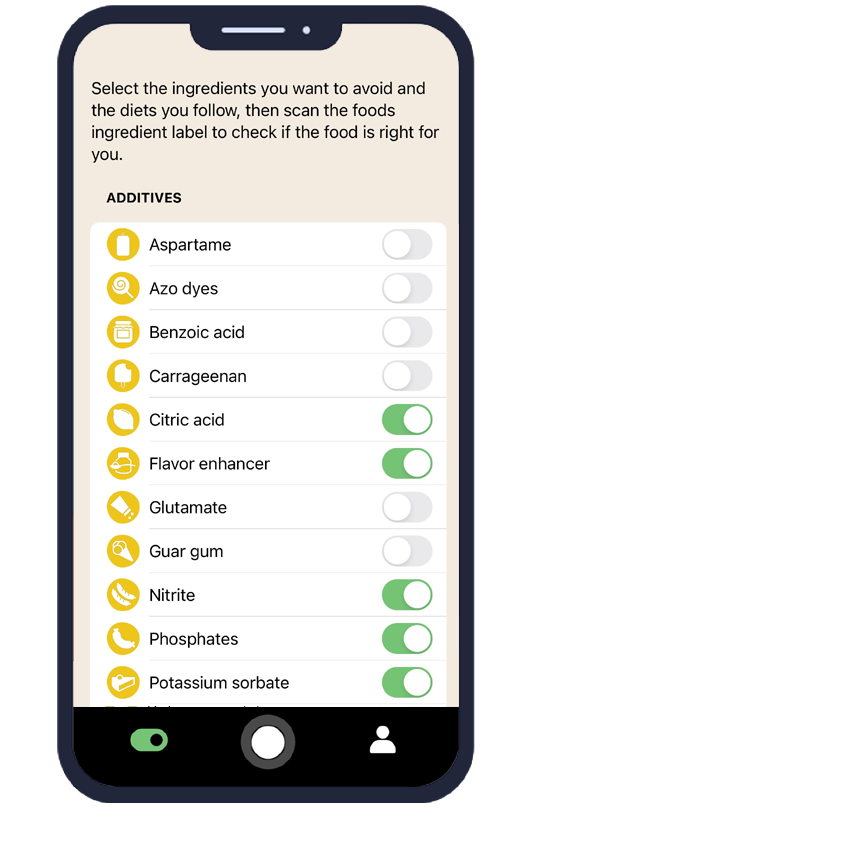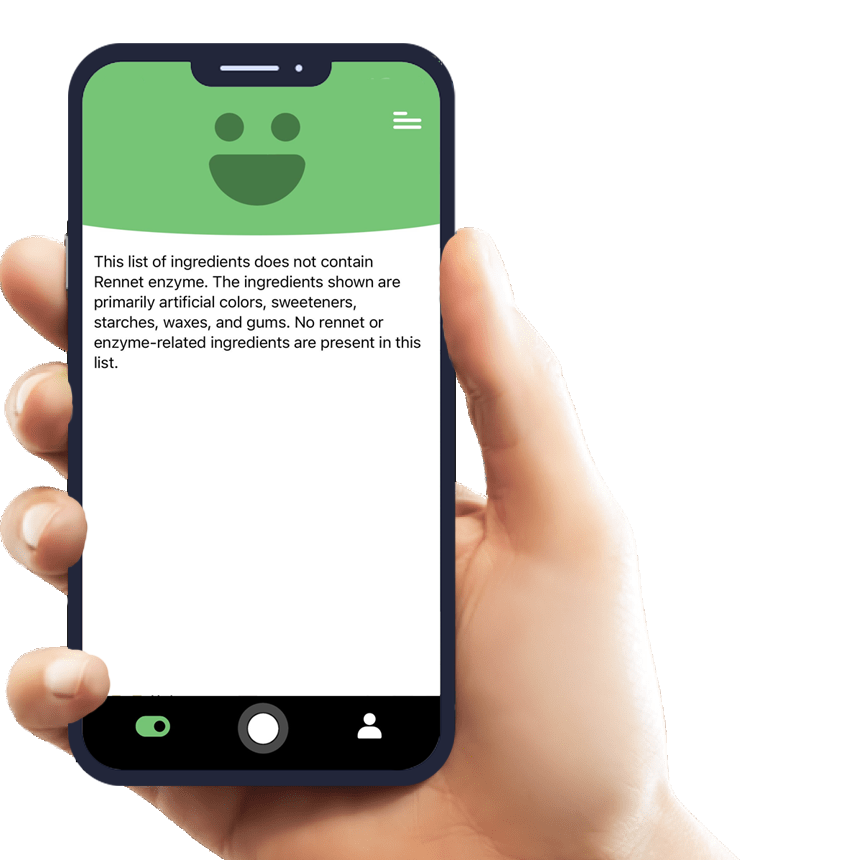Understanding Lacto-ovo-vegetarian Diet and How AI Eat This Simplifies Food Choices
A lacto-ovo-vegetarian diet represents one of the most popular vegetarian approaches, excluding meat and fish while including dairy products and eggs. For millions of people following this dietary pattern, identifying suitable foods can be challenging when navigating complex ingredient lists. The AI Eat This app revolutionizes this process by instantly scanning food labels and identifying ingredients that align with lacto-ovo-vegetarian dietary restrictions, making grocery shopping simpler and more confident.
What Is Lacto-ovo-vegetarian Diet and Where Does It Apply?
Lacto-ovo-vegetarian represents a specific type of vegetarian diet that includes dairy products (lacto) and eggs (ovo) while excluding all meat, poultry, fish, and seafood. This dietary approach appeals to individuals seeking plant-based nutrition while maintaining flexibility with certain animal-derived products.
The challenge for lacto-ovo-vegetarian followers lies in identifying hidden animal ingredients in processed foods. Many products contain unexpected animal-derived additives, gelatin, or meat-based flavorings that aren't immediately obvious from product names or marketing.
Common Foods Suitable for Lacto-ovo-vegetarian Diet
Lacto-ovo-vegetarian individuals can enjoy a wide variety of foods including fresh fruits and vegetables, grains, legumes, nuts, seeds, dairy products, and eggs. However, processed foods require careful scrutiny to ensure they don't contain hidden animal ingredients.
- Dairy products: milk, cheese, yogurt, butter
- Eggs and egg-based products
- Plant-based proteins: beans, lentils, tofu, tempeh
- Grains and cereals (without animal-derived additives)
- Fruits, vegetables, nuts, and seeds
Is Lacto-ovo-vegetarian Diet Safe? What Does Research Say?
The FDA and nutritional experts worldwide recognize lacto-ovo-vegetarian diets as nutritionally adequate when properly planned. Research consistently shows that well-balanced lacto-ovo-vegetarian diets can provide all essential nutrients while offering health benefits.
Regulatory Approvals and Guidelines
Health authorities including the World Health Organization acknowledge lacto-ovo-vegetarian diets as healthy dietary patterns. The European Food Safety Authority also supports vegetarian diets when nutritionally balanced.
Unlike food additives that require specific safety testing, lacto-ovo-vegetarian dietary patterns are evaluated based on nutritional adequacy and long-term health outcomes. Studies demonstrate reduced risks of heart disease, certain cancers, and diabetes among lacto-ovo-vegetarian populations.
Nutritional Considerations for Specific Groups
While lacto-ovo-vegetarian diets are generally safe, certain populations require special attention to specific nutrients. Pregnant women, children, and elderly individuals following lacto-ovo-vegetarian diets should monitor vitamin B12, iron, and omega-3 fatty acid intake.
How AI Eat This Helps Navigate Lacto-ovo-vegetarian Food Choices
The AI Eat This app transforms lacto-ovo-vegetarian shopping by instantly scanning ingredient lists and identifying problematic components. Users simply point their phone camera at food labels, and the app analyzes ingredients in any language, flagging items that don't align with lacto-ovo-vegetarian dietary restrictions.
This innovative technology eliminates guesswork when evaluating processed foods, snacks, and packaged meals. The app's personalized filters allow users to customize their lacto-ovo-vegetarian preferences, ensuring consistent adherence to their chosen dietary pattern.
Beyond basic ingredient scanning, AI Eat This provides detailed explanations about why certain ingredients aren't suitable for lacto-ovo-vegetarian diets. This educational component helps users make informed decisions and develop better understanding of food manufacturing processes.
Who Should Consider Lacto-ovo-vegetarian Dietary Restrictions?
Individuals choosing lacto-ovo-vegetarian lifestyles often do so for ethical, environmental, or health reasons. This dietary approach suits people wanting to reduce animal product consumption while maintaining flexibility with dairy and eggs.
People with specific health conditions may benefit from lacto-ovo-vegetarian diets under medical supervision. However, those with dairy allergies or egg allergies need to modify this approach, potentially moving toward vegan dietary patterns instead.
Athletes and active individuals can successfully follow lacto-ovo-vegetarian diets with proper planning to ensure adequate protein and energy intake. The inclusion of dairy and eggs provides high-quality protein sources that support muscle maintenance and recovery.
Tips for Maintaining a Lacto-ovo-vegetarian Diet
Successfully following lacto-ovo-vegetarian dietary restrictions requires strategic planning and label reading skills. Focus on whole, minimally processed foods while carefully evaluating packaged products for hidden animal ingredients.
Develop familiarity with common non-lacto-ovo-vegetarian ingredients like gelatin, rennet, and meat-based flavorings. These additives frequently appear in unexpected products, making ingredient scanning tools invaluable for dietary adherence.
Meal planning becomes essential for ensuring nutritional adequacy while maintaining lacto-ovo-vegetarian standards. Incorporate diverse protein sources, including legumes, dairy products, eggs, and plant-based alternatives to meet nutritional needs.
Restaurant dining requires communication with staff about lacto-ovo-vegetarian requirements. Many establishments now accommodate vegetarian preferences, but clarifying specific dietary restrictions prevents accidental consumption of unsuitable ingredients.
Conclusion
Lacto-ovo-vegetarian diets offer a balanced approach to plant-based eating while maintaining nutritional flexibility through dairy and egg inclusion. Success with lacto-ovo-vegetarian dietary restrictions depends on careful ingredient evaluation and consistent adherence to chosen guidelines.
The AI Eat This app eliminates uncertainty from lacto-ovo-vegetarian food selection by providing instant ingredient analysis and personalized dietary filtering. This technology empowers users to maintain their lacto-ovo-vegetarian lifestyle with confidence and convenience.
Download AI Eat This for free testing today and discover how simple lacto-ovo-vegetarian eating can become with intelligent ingredient scanning technology!

70 filters
With over 70 filters, you can easily avoid certain ingredients and follow your dietary preference.

Paleo

Pescetarian

Ultra-processed food

Vegan







































































